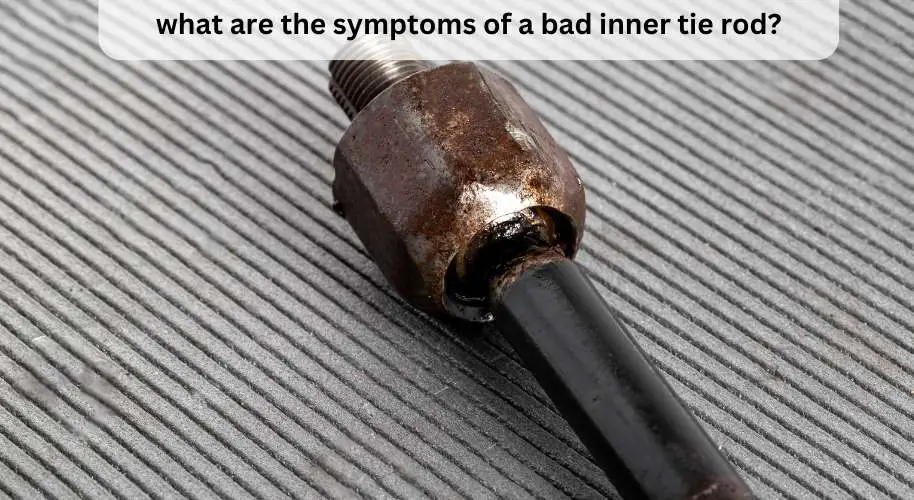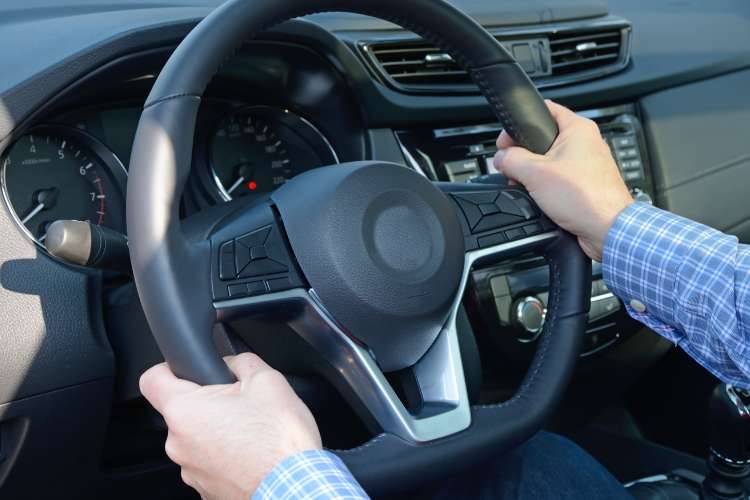Last Updated on July 20, 2023 by Henry T. Hawkins
If you own a vehicle, you’re probably familiar with the importance of your steering system. The tie rods are crucial in this system, helping connect your steering wheel to your car’s wheels. The inner tie rods, in particular, are located closer to the center of the vehicle and are responsible for controlling the movement of the wheels.
But what happens when your inner tie rods go bad? In this blog post, we’ll explore the symptoms of a bad inner tie rod, so you can identify the issue and get it fixed before it leads to more serious problems.

What Are The Symptoms Of A Bad Inner Tie Rod?
The inner tie rod is an important vehicle steering system component.
The component links the rack and pinion or steering box to the tie rod end, which in turn is connected to the spindle of the wheel.
When the inner tie rod starts to fail, it can cause a range of symptoms that can negatively impact the handling and safety of the vehicle.
The following are typical indications of a faulty inner tie rod:
Steering Wheel Play
A common indication of a faulty inner tie rod is a noticeable amount of movement in the steering wheel, resulting in a loose or unstable feel. This can lead to delayed or imprecise responses to steering commands.
Uneven Wear
If the inner tie rod is worn or damaged, it can cause the wheels to become misaligned, leading to uneven tire wear.
Uneven wear on tires may indicate a worn tie rod. This can be observed if one side of the vehicle’s tires wears out faster or if the tread wears unevenly.
Excessive Tire Wire
Symptoms of a bad inner tie rod include excessive tire wear, loose steering, shaking or vibrating steering wheel, clunking noise when turning, and poor vehicle alignment.
It is recommended to have a visual inspection by a qualified mechanic if any of these symptoms are noticed in order to determine the cause of the issue and whether it is safe to continue driving with the bad tie rod.
Vibrations in the Power Steering Wheel
Another common symptom of a bad inner tie rod is vibrations in the steering wheel. You may feel a Steering wheel shake or shimmying sensation when you’re driving, especially at higher speeds. This can be caused by the inner tie rod being loose or damaged, which can cause the wheels to become misaligned and create vibrations in the steering system.
Clunking Noises
A bad inner tie rod can also cause clunking, grinding sounds, or knocking noises when driving, especially when turning the steering wheel. This can be caused by the inner tie rod being worn or damaged, which can cause the steering system to become loose and make noise.
Steering Wheel Alignment Issues
A bad inner tie rod can result in steering wheel alignment issues, causing the wheels to not point in the same direction and leading to the vehicle pulling to one side. This can pose a challenge in maintaining control of the vehicle, particularly on highways and other high-speed roads.
Also read: Car ac blowing warm air when driving
How to Diagnose a Bad Inner Tie Rod with a Loose Steering Wheel Or Not?

Here are some steps to diagnose a bad inner tie rod:
- Start by jacking up the vehicle and securing it with jack stands.
- Check the tie rod ends by grasping each tire and shaking it from side to side. If there is any looseness or play, it could indicate a problem with the inner tie rod.
- Inspect the steering gear boots and the inner tie rod ends for any damage or signs of wear.
- Check the steering wheel for looseness or play while the vehicle is still on the ground. If the steering wheel feels loose or vague, it’s likely that the inner tie rod is worn or damaged.
- Take the vehicle for a test drive and listen for any unusual noises or vibrations. If you hear any clunking or clicking sounds, it could indicate a problem with the inner tie rod.
“If you suspect an inner tie rod issue, have it checked out as soon as possible to ensure your safety and the safety of others on the road, says Tim Timothy Wingfield, an Automotive Mechanic. It’s important to get the problem diagnosed and repaired before it becomes a major issue.”
It is always advised to take your vehicle for regular checkups and inspections by a qualified professional mechanic, he added.
This will help you identify any potential issues with your vehicle before they become major and costly problems. To ensure your safety and the performance of your vehicle, have a qualified professional inspect the inner tie rod regularly.
How To Prevent Your Inner Tie Rod from Failing?
These tips can be useful in preventing the failure of your inner tie rod:
1. Perform regular inspections
Regular inspections of your vehicle’s steering and suspension systems help catch problems before they become severe. Look for signs of wear or damage, such as cracked or damaged boots, loose or damaged tie rod ends, or worn ball joints.
2. Check for proper alignment
Misaligned wheels can put extra stress on your tie rods, causing them to wear out more quickly. Be sure to have your vehicle’s alignment checked regularly, especially after hitting a curb or pothole.
3. Avoid rough driving
Avoid rough driving and rough roads, as these can put additional strain on your tie rods and other suspension components.
4. Replace worn components
If you notice any signs of wear or damage during an inspection, replace the worn components immediately to prevent further damage to your steering system.
5. Use quality replacement parts
When replacing any steering or suspension components, be sure to use quality replacement parts from a reputable manufacturer. This can help ensure proper fit and performance and reduce the risk of premature failure.
Also read: Why is my car shaking when I turn the ac on
Frequently Asked Questions
Is it Safe to Drive With a Bad Tie Rod End?
A bad tie rod end can make driving unsafe and potentially cause damage to your car’s under-chassis components.
Typical signs of a faulty tie rod are uneven tire wear, unstable front wheels, and irregular tire wear.
If you suspect your tie rod is bad, fixing it as soon as possible is important to avoid any potential safety issues.
How Much Does It Cost to Fix Worn Tie Rods?
The cost of fixing worn tie rods varies depending on the quality of parts used and how difficult it is to access the tie rod end. On average, tie rod replacement can cost anywhere from $185 to $300. A tie rod ends itself typically costs between $40 and $120.
Labor costs are the biggest factor in the total cost, as replacing the tie rod end typically requires at least 2-3 hours of work. Labor charges can range from $80 to $120 per hour, and you should expect to pay a minimum of one hour’s charge.
How Is the Inner Tie Rod Different from the Outer Tie Rod?
The outer and inner tie rods have different functions in the steering system. The outer ties the steering knuckle to the steering gear, while the inner connects the steering gear to the rack and pinion.
The inner tie rod is typically harder to access and requires more effort to replace than the outer tie rod. Both components play essential roles in keeping your car’s steering system functioning properly, so it’s important to have both checked and replaced if necessary.
Conclusion
If you notice any of these symptoms, it’s important to get your vehicle checked by a professional as soon as possible. Ignoring a bad inner tie rod can lead to more serious problems, such as losing steering control or a flat tire. By fixing the issue quickly, you can ensure your vehicle remains safe and reliable on the road.

